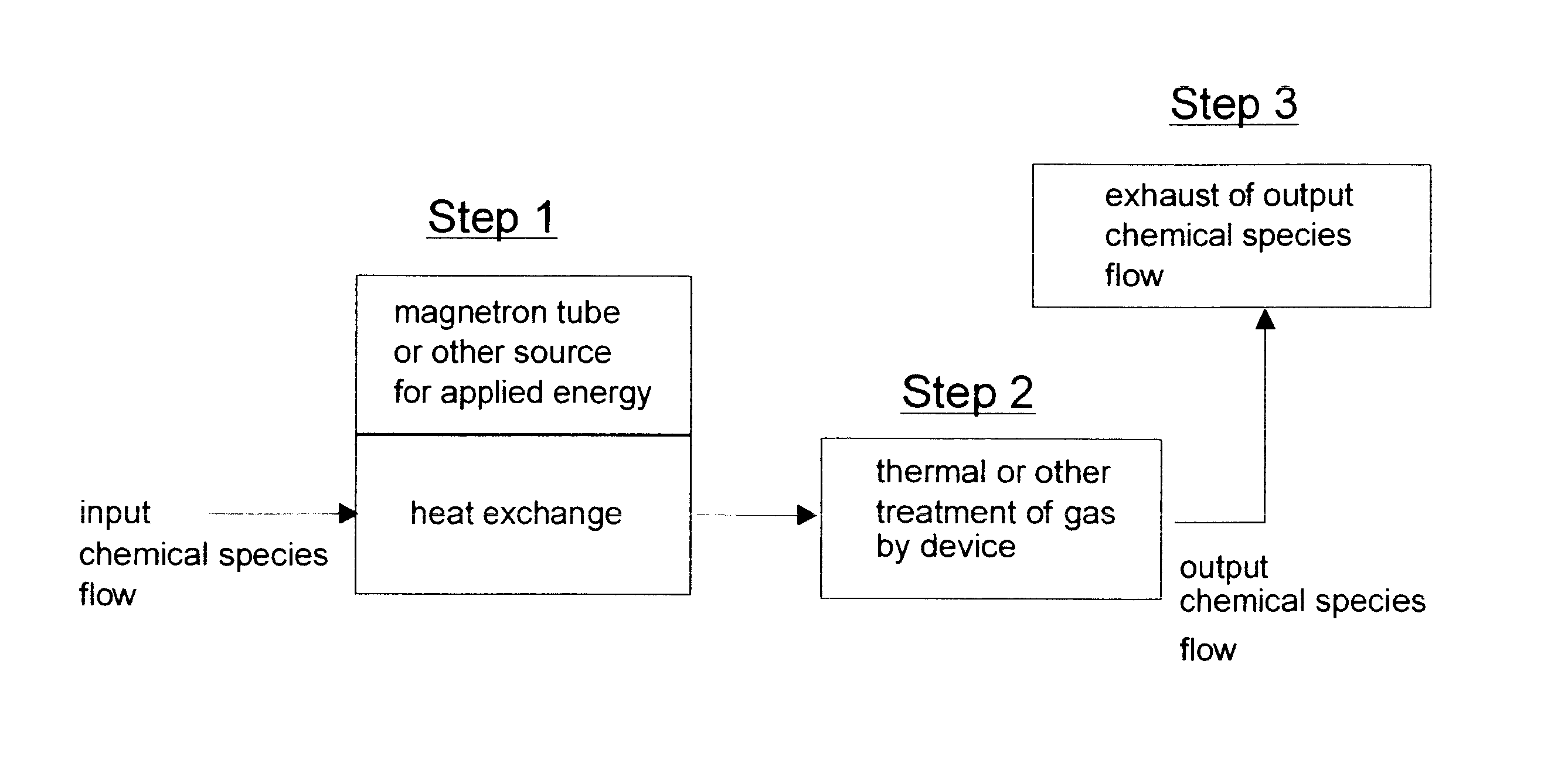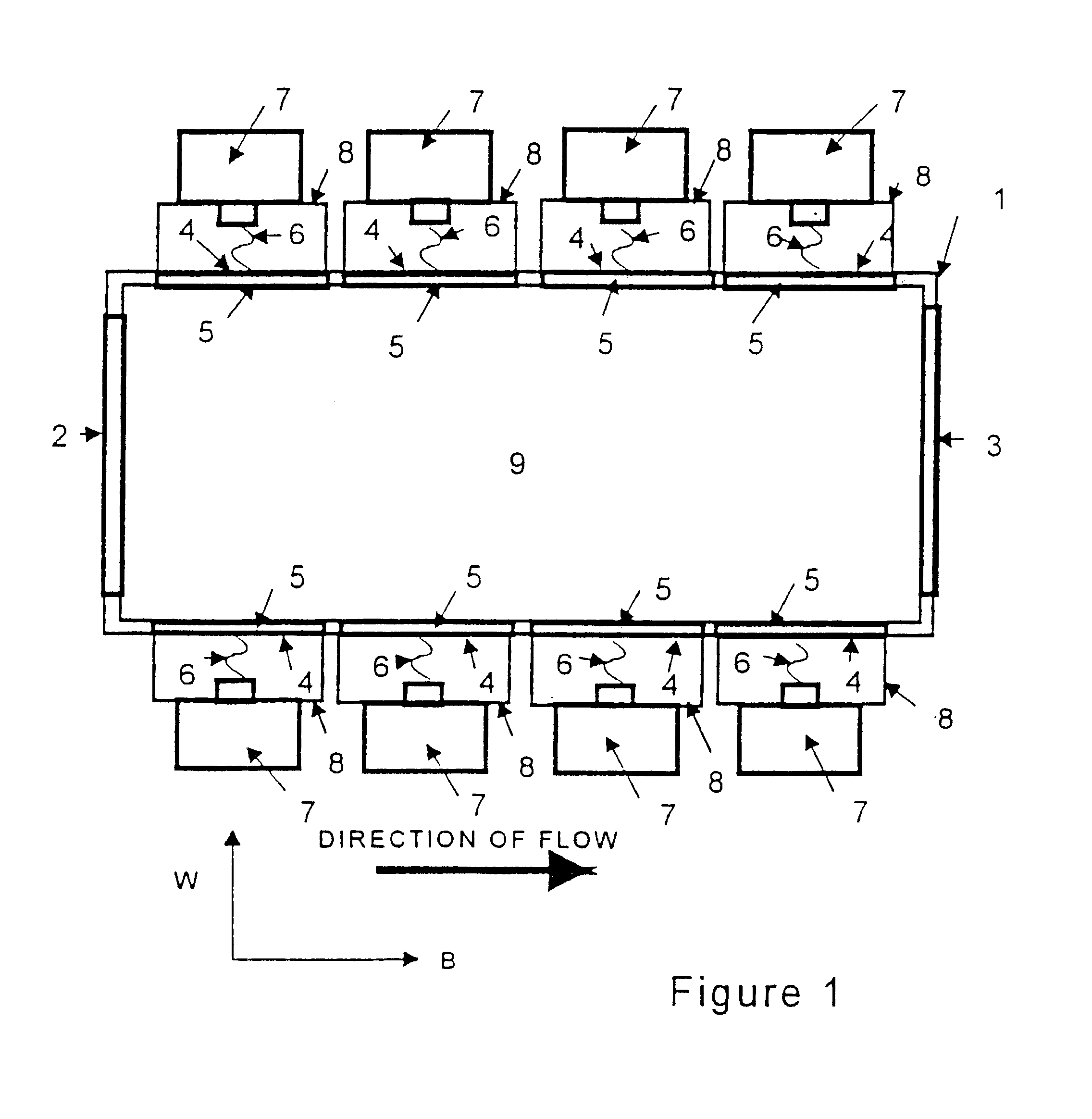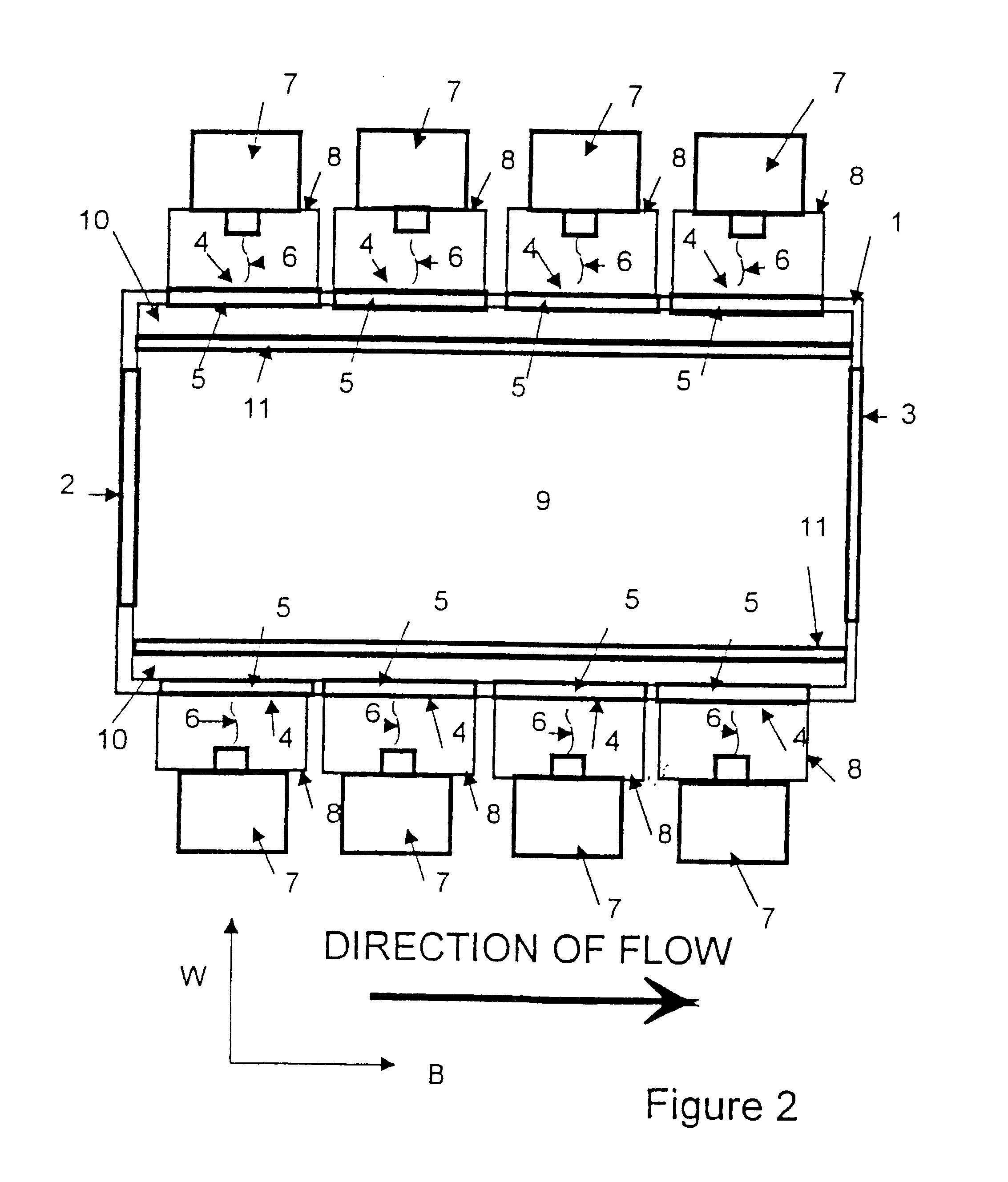Heat transfer with artificial dielectric device
a dielectric device and heat transfer technology, applied in the direction of electric/magnetic/electromagnetic heating, physical/chemical process catalysts, separation processes, etc., can solve the problems of limited above-effects and the inability of the susceptor's structure to allow the applied energy to penetrate into the entire volume, so as to increase the efficiency of such devices and reduce the cost of operation. the effect of the cos
- Summary
- Abstract
- Description
- Claims
- Application Information
AI Technical Summary
Benefits of technology
Problems solved by technology
Method used
Image
Examples
Embodiment Construction
with Example 5, one finds that a greater percentage of SiC in the macroscopic susceptor produced a faster heating rate and a higher temperature the macroscopic susceptor.
Discussion 2: When the results of Examples 5 and 6 are compared, one finds that the greater volume percentage of SiC, which makes an artificial dielectric material within the unit susceptors, does not greatly effect the time to show a red glow and decreases the temperature after one hour when compared to unit susceptors that are just made from the aluminosilicate ceramic matrix material. The macroscopic susceptor of Example 6 is constructed of only unit susceptors that have a composition of an aluminosilicate ceramic matrix containing 12 vol. % -325 mesh SiC, required 27 minutes to show a red glow and after one hour had a center temperature of 858.degree. C., whereas the macroscopic susceptor of Example 6 is constructed of only unit susceptors that have a composition of the aluminosilicate ceramic matrix contain 0 v...
PUM
| Property | Measurement | Unit |
|---|---|---|
| thickness | aaaaa | aaaaa |
| thickness | aaaaa | aaaaa |
| diameter | aaaaa | aaaaa |
Abstract
Description
Claims
Application Information
 Login to View More
Login to View More - R&D
- Intellectual Property
- Life Sciences
- Materials
- Tech Scout
- Unparalleled Data Quality
- Higher Quality Content
- 60% Fewer Hallucinations
Browse by: Latest US Patents, China's latest patents, Technical Efficacy Thesaurus, Application Domain, Technology Topic, Popular Technical Reports.
© 2025 PatSnap. All rights reserved.Legal|Privacy policy|Modern Slavery Act Transparency Statement|Sitemap|About US| Contact US: help@patsnap.com



